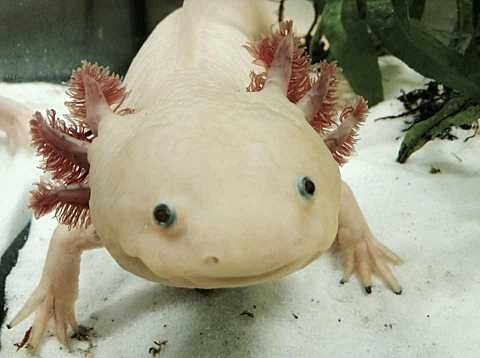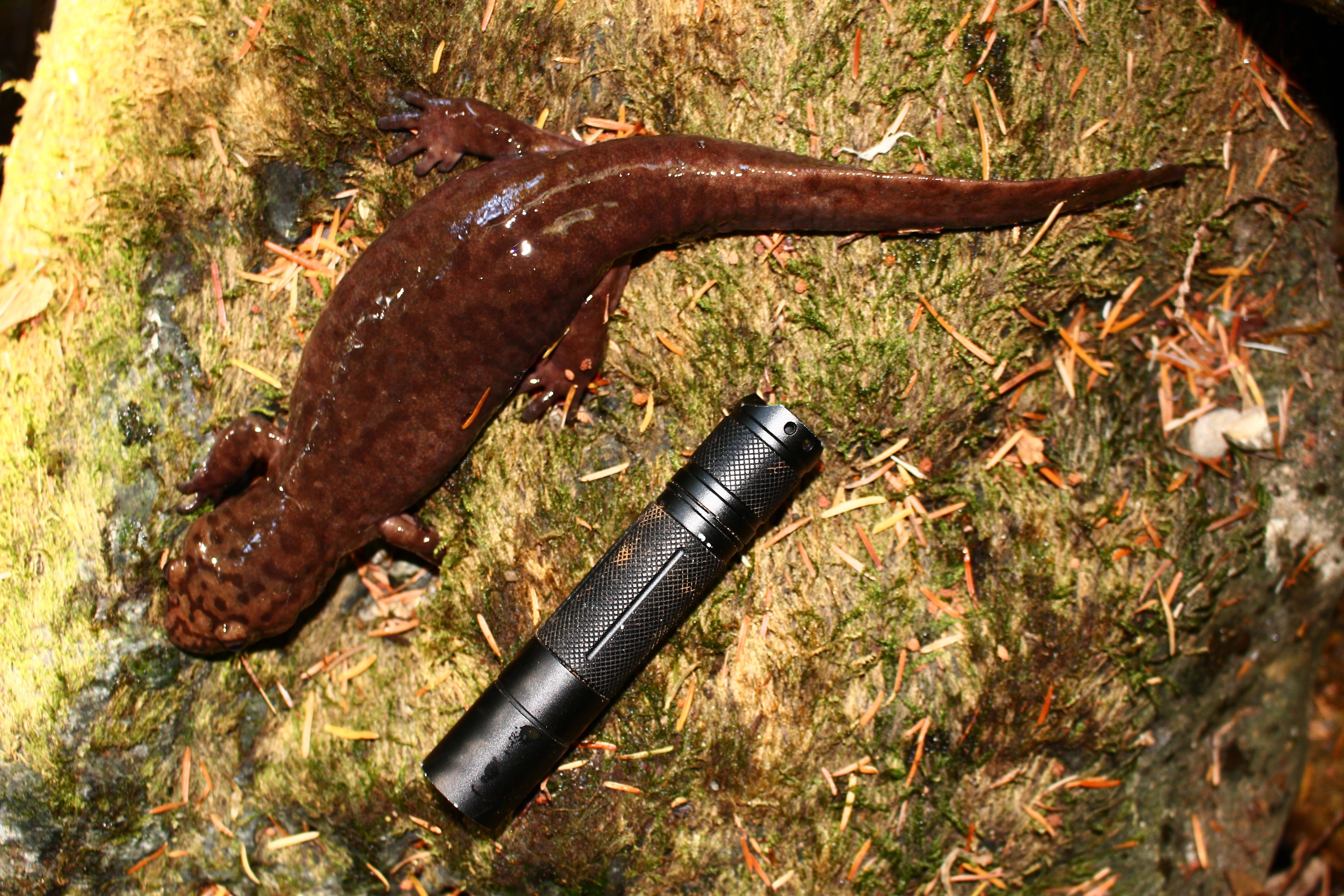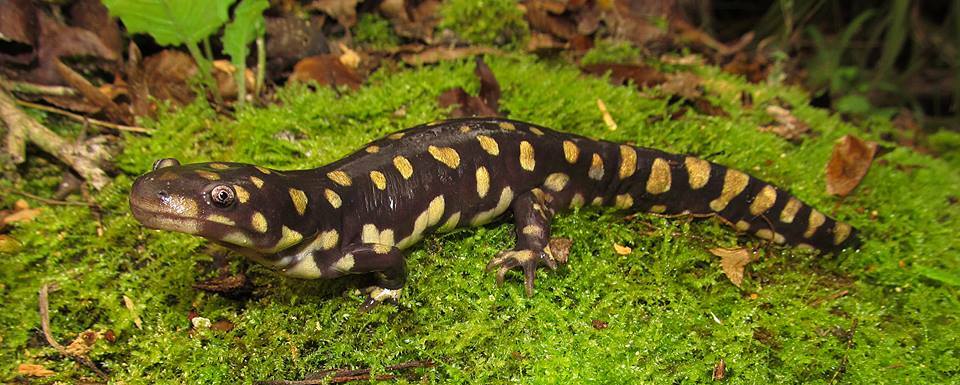|
Ambystomatidae
Ambystomatidae is a family of salamanders belonging to the order Caudata in the class Amphibia. It contains two genera, ''Ambystoma'' (the mole salamanders) and ''Dicamptodon'' (the Pacific giant salamanders). ''Ambystoma'' contains 32 species and are distributed widely across North America, while ''Dicamptodon'' contains four species restricted to the Pacific Northwest. These salamanders are mostly terrestrial and eat invertebrates, although some species are known to eat smaller salamanders. They can be found throughout the US and some areas of Canada in damp forests or plains. This family contains some of the largest terrestrial salamanders in the world, the tiger salamander and the coastal giant salamander. Some species are toxic and can secrete poison from their bodies as protection against predators or infraspecific competition. Neoteny has been observed in several species in Ambystomatidae, and some of them like the axolotl live all of their lives under water in their larval ... [...More Info...] [...Related Items...] OR: [Wikipedia] [Google] [Baidu] |
Mole Salamander
The mole salamanders (genus ''Ambystoma'') are a group of advanced salamanders endemic to North America. The group has become famous due to the presence of the axolotl (''A. mexicanum''), widely used in research due to its paedomorphosis, and the tiger salamander (''A. tigrinum, A. mavortium'') which is the official amphibian of many states, and often sold as a pet. General description Terrestrial mole salamanders are identified by having wide, protruding eyes, prominent costal grooves, and thick arms. Most have vivid patterning on dark backgrounds, with marks ranging from deep blue spots to large yellow bars depending on the species. Terrestrial adults spend most of their lives underground in burrows, either of their own making or abandoned by other animals. Some northern species may hibernate in these burrows throughout the winter. They live alone and feed on any available invertebrate. Adults spend little time in the water, only returning to the ponds of their birth to br ... [...More Info...] [...Related Items...] OR: [Wikipedia] [Google] [Baidu] |
Salamanders
Salamanders are a group of amphibians typically characterized by their lizard-like appearance, with slender bodies, blunt snouts, short limbs projecting at right angles to the body, and the presence of a tail in both larvae and adults. All ten extant salamander families are grouped together under the order Urodela. Salamander diversity is highest in eastern North America, especially in the Appalachian Mountains; most species are found in the Holarctic realm, with some species present in the Neotropical realm. Salamanders rarely have more than four toes on their front legs and five on their rear legs, but some species have fewer digits and others lack hind limbs. Their permeable skin usually makes them reliant on habitats in or near water or other cool, damp places. Some salamander species are fully aquatic throughout their lives, some take to the water intermittently, and others are entirely terrestrial as adults. This group of amphibians is capable of regenerating lost limb ... [...More Info...] [...Related Items...] OR: [Wikipedia] [Google] [Baidu] |
Dicamptodon
The Pacific giant salamanders (frequently stylized as Giant Pacific Salamanders or GPS) are members of the genus ''Dicamptodon''. They are large salamanders endemic to the Pacific Northwest in North America. They are included in the family Ambystomatidae, or alternatively, in their own monogeneric family Dicamptodontidae. Description Pacific giant salamanders are defined by their wide protruding eyes, costal grooves, thick arms, and dark background coloring. ''Dicamptodon'' have a snout-vent-length (SVL) of 350 mm, a broad head, laterally flexible flattened tails, paired premaxillae that are separate from the nasals, and the aquatic larvae have gills. ''Dicamptodon'' have lacrimals and pterygoids that are present, but quadratojugal are absent. While most salamanders are silent, the Pacific giant salamander is one of several salamanders that have vocal abilities. When startled, these salamanders may respond with a croaky-sounding cry similar to that of a barking dog. Habita ... [...More Info...] [...Related Items...] OR: [Wikipedia] [Google] [Baidu] |
Axolotl
The axolotl (; from nci, āxōlōtl ), ''Ambystoma mexicanum'', is a paedomorphic salamander closely related to the tiger salamander. Axolotls are unusual among amphibians in that they reach adulthood without undergoing metamorphosis. Instead of taking to the land, adults remain aquatic and gilled. The species was originally found in several lakes underlying what is now Mexico City, such as Lake Xochimilco and Lake Chalco. These lakes were drained by Spanish settlers after the conquest of the Aztec Empire, leading to the destruction of much of the axolotl’s natural habitat. Axolotls should not be confused with the larval stage of the closely related tiger salamander (''A. tigrinum''), which are widespread in much of North America and occasionally become paedomorphic. Neither should they be confused with mudpuppies (''Necturus'' spp.), fully aquatic salamanders from a different family that are not closely related to the axolotl but bear a superficial resemblance. , wild ax ... [...More Info...] [...Related Items...] OR: [Wikipedia] [Google] [Baidu] |
Pacific Giant Salamander
The Pacific giant salamanders (frequently stylized as Giant Pacific Salamanders or GPS) are members of the genus ''Dicamptodon''. They are large salamanders endemic to the Pacific Northwest in North America. They are included in the family Ambystomatidae, or alternatively, in their own monogeneric family Dicamptodontidae. Description Pacific giant salamanders are defined by their wide protruding eyes, costal grooves, thick arms, and dark background coloring. ''Dicamptodon'' have a snout-vent-length (SVL) of 350 mm, a broad head, laterally flexible flattened tails, paired premaxillae that are separate from the nasals, and the aquatic larvae have gills. ''Dicamptodon'' have lacrimals and pterygoids that are present, but quadratojugal are absent. While most salamanders are silent, the Pacific giant salamander is one of several salamanders that have vocal abilities. When startled, these salamanders may respond with a croaky-sounding cry similar to that of a barking dog. Habita ... [...More Info...] [...Related Items...] OR: [Wikipedia] [Google] [Baidu] |
Coastal Giant Salamander
The coastal giant salamander (''Dicamptodon tenebrosus'') is a species of salamander in the family Dicamptodontidae (Pacific giant salamanders). It is endemic to the Pacific Northwest of North America. There are three closely related species to this taxon: ''D. ensatus'' ( California giant salamander), ''D. copei'' (Cope's giant salamander), and ''D. aterrimus'' (Idaho giant salamander). Description The coastal giant salamander can reach up to 34 cm (13 inches) in total length, making it the largest terrestrial salamander in North America. The coastal giant salamander has stout limbs with four toes on the front feet and five toes on the back feet. The species tail is around 40 percent of the total length of the salamander and is laterally compressed. The head, back, and sides have a marbled or reticulate pattern of dark blotches on a light brown or brassy-colored background. The head is broad with a shovel-like snout and a fold of skin across the throat called the gular fol ... [...More Info...] [...Related Items...] OR: [Wikipedia] [Google] [Baidu] |
Tiger Salamander
The tiger salamander (''Ambystoma tigrinum'') is a species of mole salamander and one of the largest terrestrial salamanders in North America. Description These salamanders usually grow to a length of with a lifespan of around 12–15 years. They are characterized by having markings varying in color on the back of their head, body, and tail. The coloring of these spots range from brownish yellow to greenish yellow, while the rest of their back is black or dark brown. They have short snouts, thick necks, strong legs, and lengthy tails. Their diet consists largely of small insects, snails, slugs, frogs, and worms, although it is not rare for an adult to turn cannibalistic and consume its own kind. Cannibalism in these salamanders can almost always be traced back to a large volume of competing predators and lack of prey in the area. If the opportunity presents itself, tiger salamanders will even feed on other smaller salamander species, lizards, snakelets (baby snakes), and newbo ... [...More Info...] [...Related Items...] OR: [Wikipedia] [Google] [Baidu] |
Rhyacotritonidae
The torrent salamanders or Cascade salamanders are a family of salamanders (Rhyacotritonidae) with only one genus, ''Rhyacotriton''. The torrent salamanders are endemic to the United States in the Pacific Northwest (including northwestern California). Species The genus ''Rhyacotriton'' includes four species: *Cascade torrent salamander (''R. cascadae'') *Columbia torrent salamander (''R. kezeri'') * Olympic torrent salamander (''R. olympicus'') * Southern torrent salamander (''R. variegatus'') Taxonomy Originally the genus ''Rhyacotriton'' was placed in the family Ambystomatidae, later in the family Dicamptodontidae The Pacific giant salamanders (frequently stylized as Giant Pacific Salamanders or GPS) are members of the genus ''Dicamptodon''. They are large salamanders endemic to the Pacific Northwest in North America. They are included in the family Ambyst ..., and finally in 1992 it was placed into a family of its own. At the same time the only species ''Rhyacotriton olym ... [...More Info...] [...Related Items...] OR: [Wikipedia] [Google] [Baidu] |
Tiger Salamander
The tiger salamander (''Ambystoma tigrinum'') is a species of mole salamander and one of the largest terrestrial salamanders in North America. Description These salamanders usually grow to a length of with a lifespan of around 12–15 years. They are characterized by having markings varying in color on the back of their head, body, and tail. The coloring of these spots range from brownish yellow to greenish yellow, while the rest of their back is black or dark brown. They have short snouts, thick necks, strong legs, and lengthy tails. Their diet consists largely of small insects, snails, slugs, frogs, and worms, although it is not rare for an adult to turn cannibalistic and consume its own kind. Cannibalism in these salamanders can almost always be traced back to a large volume of competing predators and lack of prey in the area. If the opportunity presents itself, tiger salamanders will even feed on other smaller salamander species, lizards, snakelets (baby snakes), and newbo ... [...More Info...] [...Related Items...] OR: [Wikipedia] [Google] [Baidu] |
Amphibia
Amphibians are four-limbed and ectothermic vertebrates of the class Amphibia. All living amphibians belong to the group Lissamphibia. They inhabit a wide variety of habitats, with most species living within terrestrial, fossorial, arboreal or freshwater aquatic ecosystems. Thus amphibians typically start out as larvae living in water, but some species have developed behavioural adaptations to bypass this. The young generally undergo metamorphosis from larva with gills to an adult air-breathing form with lungs. Amphibians use their skin as a secondary respiratory surface and some small terrestrial salamanders and frogs lack lungs and rely entirely on their skin. They are superficially similar to reptiles like lizards but, along with mammals and birds, reptiles are amniotes and do not require water bodies in which to breed. With their complex reproductive needs and permeable skins, amphibians are often ecological indicators; in recent decades there has been a dramatic decl ... [...More Info...] [...Related Items...] OR: [Wikipedia] [Google] [Baidu] |
Neoteny
Neoteny (), also called juvenilization,Montagu, A. (1989). Growing Young. Bergin & Garvey: CT. is the delaying or slowing of the physiological, or somatic, development of an organism, typically an animal. Neoteny is found in modern humans compared to other primates. In progenesis or paedogenesis, sexual development is accelerated. Both neoteny and progenesis result in paedomorphism (as having the form typical of children) or paedomorphosis (changing towards forms typical of children), a type of heterochrony. It is the retention in adults of traits previously seen only in the young. Such retention is important in evolutionary biology, domestication and evolutionary developmental biology. Some authors define paedomorphism as the retention of larval traits, as seen in salamanders.Schell, S. C. ''Handbook of Trematodes of North America North of Mexico'', 1985, pg. 22 History and etymology The origins of the concept of neoteny have been traced to the Bible (as argued by Ashley Monta ... [...More Info...] [...Related Items...] OR: [Wikipedia] [Google] [Baidu] |






.png)